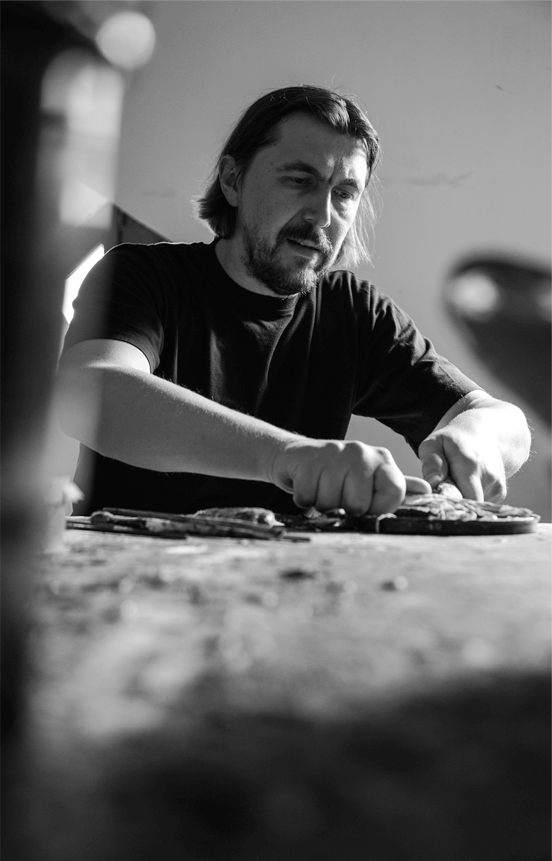
ILLARIA FERRI: PREMIO COMEL – INTERVIEW WITH ROBERT HROMEC, Roma, 2024 (EN I IT I SK)
ALBERTO DESIRÒ: ALLEGRIA, Florence, 2024 (EN I IT I SK)
LETIZIA ROSTAGNO: REBIRTH, Bologna, 2024 (EN I IT I SK)
FRANCESCA CIAMPA: SILENZIO, Sorrento, 2022 (EN I IT I SK)
DAGMAR SRNENSKÁ: FALLING COMET, Bratislava, 2020 (EN I IT I SK)
IVAN JANČÁR: ČASY A PRIESTORY ROBERTA HROMCA, Bratislava, 2017 (EN I IT I SK)
RICK KINSEL: ROBERT HROMEC’S INSIDE A TIME CAPSULE, New York, 2017 (EN I IT I SK)
GIACOMO MARCO VALERIO: TIME CAPSULE, Milano, 2017 (EN I IT I SK)
DOROTHEA JEGER: PLAYER OF TIME, Zurich, 2017 (EN I IT I SK)
MARTINA CAMPESE: THE CREATION OF A STYLE / LA CREAZIONE DI UNO STILE, Venezia, 2017 (EN | IT | SK)
ANTON DIVÁCKÝ: S DUŠOU ROMANTIKA A S POHĽADOM UPRETÝM DO BUDÚCNOSTI, Praha, 2017 (EN I IT I SK)
ANDREJ JAROŠ: ODKAZ PRE ĎAĽŠIE GENERÁCIE, Bratislava, 2017 (EN I IT I SK)
ARIANNA GRAVA: SILENCE / SILENZIO, Milano, 2016 (EN I IT I SK)
DANTE TESTOLINI: HANDS OF LIGHT BY ROBERT HROMEC, Florence, 2014 (EN I IT I SK)
MAURIZIO VANNI: MANI DI LUCE / HANDS OF LIGHT, Lucca, 2014 (EN I IT I SK)
RICK KINSEL: NEW MIXED-MEDIA PAINTINGS ON ALUMINUM PLATE, New York, 2013 (EN I IT I SK)
IVAN JANČAR: LOOKING…, Bratislava, 2013 (EN I IT I SK)
ANTHONY PANZERA: ROBERT HROMEC, New York, 2010 (EN I IT I SK)
ANTON DIVÁCKÝ: A WEAVING OF WORLDS, Prague, 2010 (EN I IT I SK)
DOROTHEA JEGER: PANOPTICUM OF SENSES, Zurich, 2008 (EN I IT I SK)
EVA TROJANOVÁ: ROBERT HROMEC, Danubiana, 2008 (EN I IT I SK)
ĽUDO PETRANSKY Jr.: MAN AS THE SYMBOL OF THE WORLD (interview), Danubiana, 2002 (EN I IT I SK)
BARBARA GINDL: ELLAZ, Bratislava, 1997 (EN I IT I SK)
TONI ANN SERRATELLI: A PEEK INSIDE ROBERT HROMEC’S STUDIO, New York, 1996 (EN I IT I SK)
HOPE E. BUCHHOLTZ: THREE DANCERS SERIES, New York, 1996 (EN I IT I SK)